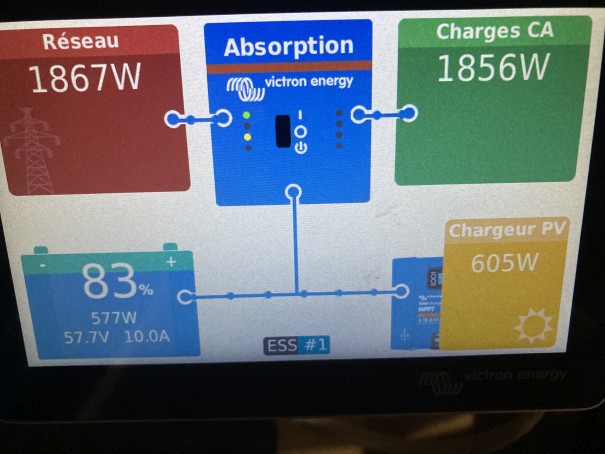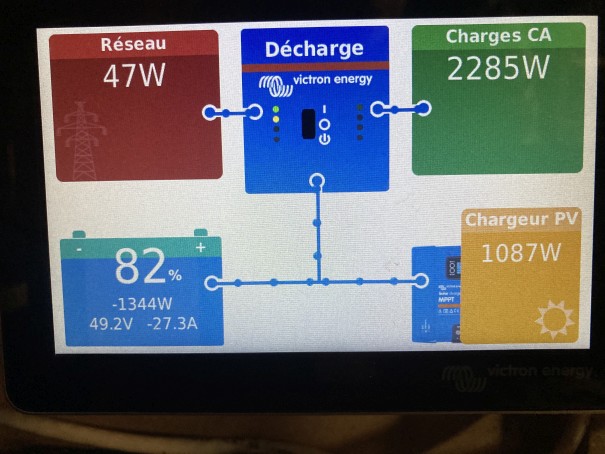I would like to configure my ESS in the following way :
- to keep battery level to 80%
- to give priority to PV power to feed the loads
- feed the battery only in case of excess of PV power
To do so I put the SOC limit at 80% in ESS and the Optimized mode is activated (without BatteryLife).
The problem is the following : the battery is cycling between 80 and 83% and the priority of PV power is not given to the loads.
Indeed, even if PV power is lower to the loads, the PV are first feeding the battery in order to reach something around 83%. Then, a discharge cycle start to come back to 80%. This is not what I would like to do.
I want to keep battery to 80% for safety mode in case of failure of grid loads and I would like to feed the battery (between 80 and 100%) only in case of extra PV power.
To illustrate, the issue :
1/ Even if battery is higher to SOC limit of 80%, the system is feeding the battery with PV power :
first in bulk mode :

then in absorption mode until reaching 83%:

2/ Finally, the battery power is used is discharge mode until 80%

... and this cycle is starting again as long as PV Power is available
How I can solve this issue ? What does I need to modify in ESS configuration ?
Thanks
